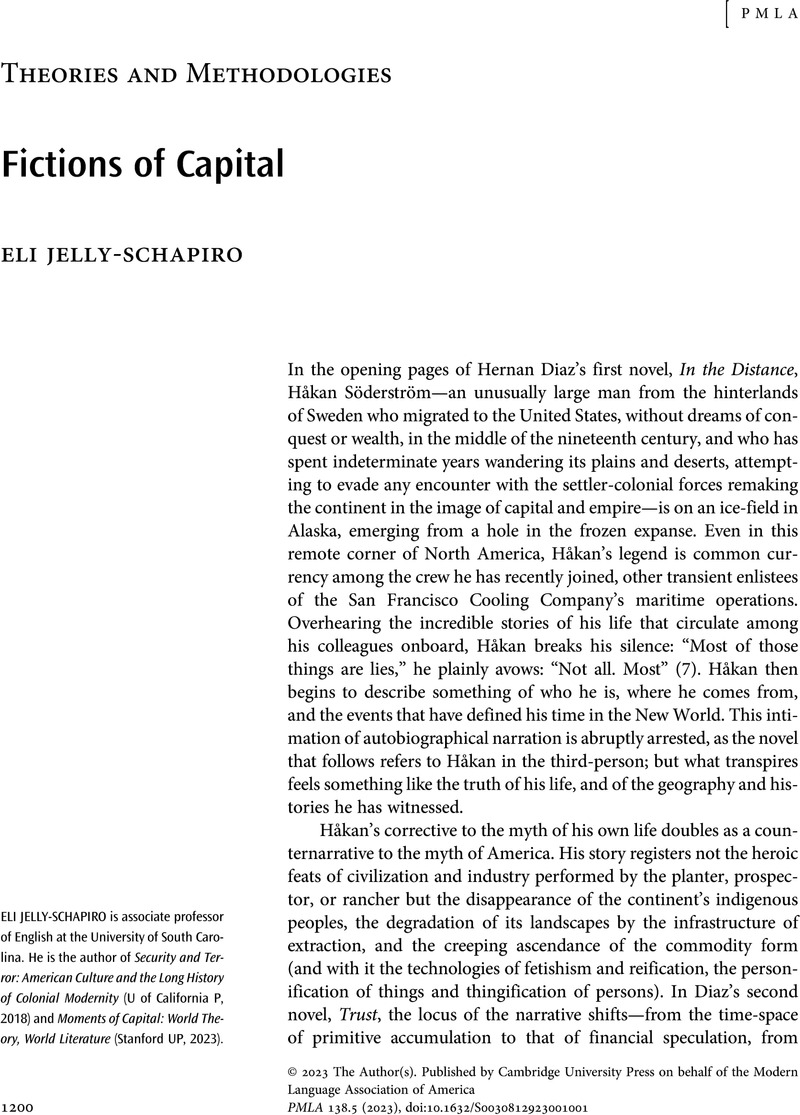No CrossRef data available.
Article contents
Fictions of Capital
Published online by Cambridge University Press: 02 January 2024
Abstract
An abstract is not available for this content so a preview has been provided. Please use the Get access link above for information on how to access this content.

- Type
- Theories and Methodologies
- Information
- Copyright
- Copyright © 2023 The Author(s). Published by Cambridge University Press on behalf of the Modern Language Association of America
References
Works Cited
De Boever, Arne. Finance Fictions: Realism and Psychosis in a Time of Economic Crisis. Fordham UP, 2018.Google Scholar
Durand, Cédric. Fictitious Capital: How Finance Is Appropriating Our Future. Translated by Broder, David, Verso Books, 2017.Google Scholar
Holt, Elizabeth. Fictitious Capital: Silk, Cotton, and the Rise of the Arabic Novel. Fordham UP, 2017.Google Scholar
Jelly-Schapiro, Eli. Moments of Capital: World Theory, World Literature. Stanford UP, 2023.CrossRefGoogle Scholar
Kornbluh, Anna. Realizing Capital: Financial and Psychic Economies in Victorian Form. Fordham UP, 2014.Google Scholar
La Berge, Leigh Claire. Scandals and Abstraction: Financial Fiction and the Long 1980s. Oxford UP, 2014.CrossRefGoogle Scholar
McClanahan, Annie. Dead Pledges: Debt, Crisis, and Twenty-First-Century Culture. Stanford UP, 2016.CrossRefGoogle Scholar
Shonkwiler, Alison. The Financial Imaginary: Economic Mystification and the Limits of Realism. U of Minnesota P, 2017Google Scholar
Weber, Max. The Protestant Ethic and the Spirit of Capitalism. 1905. Translated by Parsons, Talcott, Charles Scribner's Sons, 1958.Google Scholar


